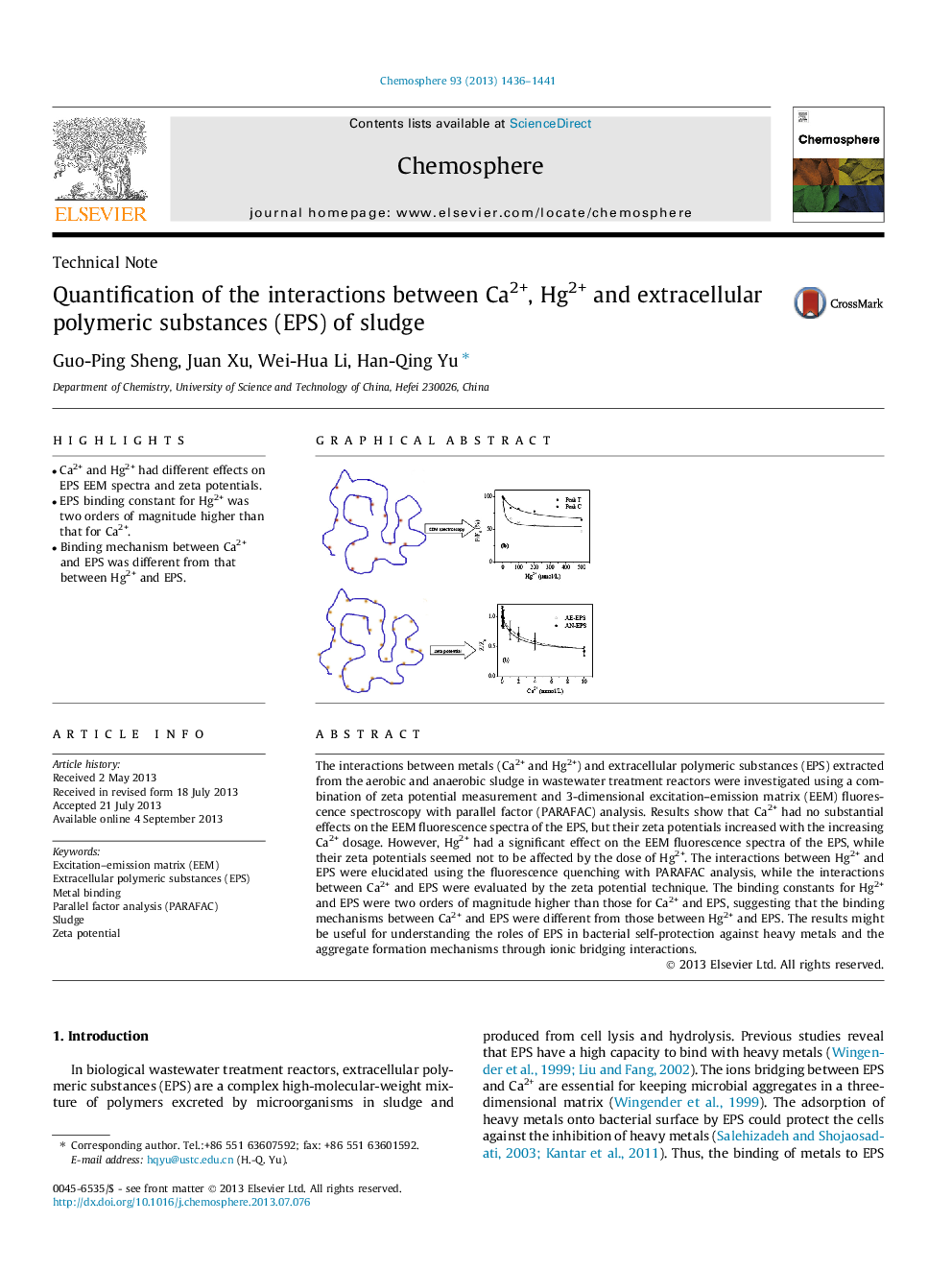| Article ID | Journal | Published Year | Pages | File Type |
|---|---|---|---|---|
| 4409205 | Chemosphere | 2013 | 6 Pages |
•Ca2+ and Hg2+ had different effects on EPS EEM spectra and zeta potentials.•EPS binding constant for Hg2+ was two orders of magnitude higher than that for Ca2+.•Binding mechanism between Ca2+ and EPS was different from that between Hg2+ and EPS.
The interactions between metals (Ca2+ and Hg2+) and extracellular polymeric substances (EPS) extracted from the aerobic and anaerobic sludge in wastewater treatment reactors were investigated using a combination of zeta potential measurement and 3-dimensional excitation–emission matrix (EEM) fluorescence spectroscopy with parallel factor (PARAFAC) analysis. Results show that Ca2+ had no substantial effects on the EEM fluorescence spectra of the EPS, but their zeta potentials increased with the increasing Ca2+ dosage. However, Hg2+ had a significant effect on the EEM fluorescence spectra of the EPS, while their zeta potentials seemed not to be affected by the dose of Hg2+. The interactions between Hg2+ and EPS were elucidated using the fluorescence quenching with PARAFAC analysis, while the interactions between Ca2+ and EPS were evaluated by the zeta potential technique. The binding constants for Hg2+ and EPS were two orders of magnitude higher than those for Ca2+ and EPS, suggesting that the binding mechanisms between Ca2+ and EPS were different from those between Hg2+ and EPS. The results might be useful for understanding the roles of EPS in bacterial self-protection against heavy metals and the aggregate formation mechanisms through ionic bridging interactions.
Graphical abstractFigure optionsDownload full-size imageDownload as PowerPoint slide
